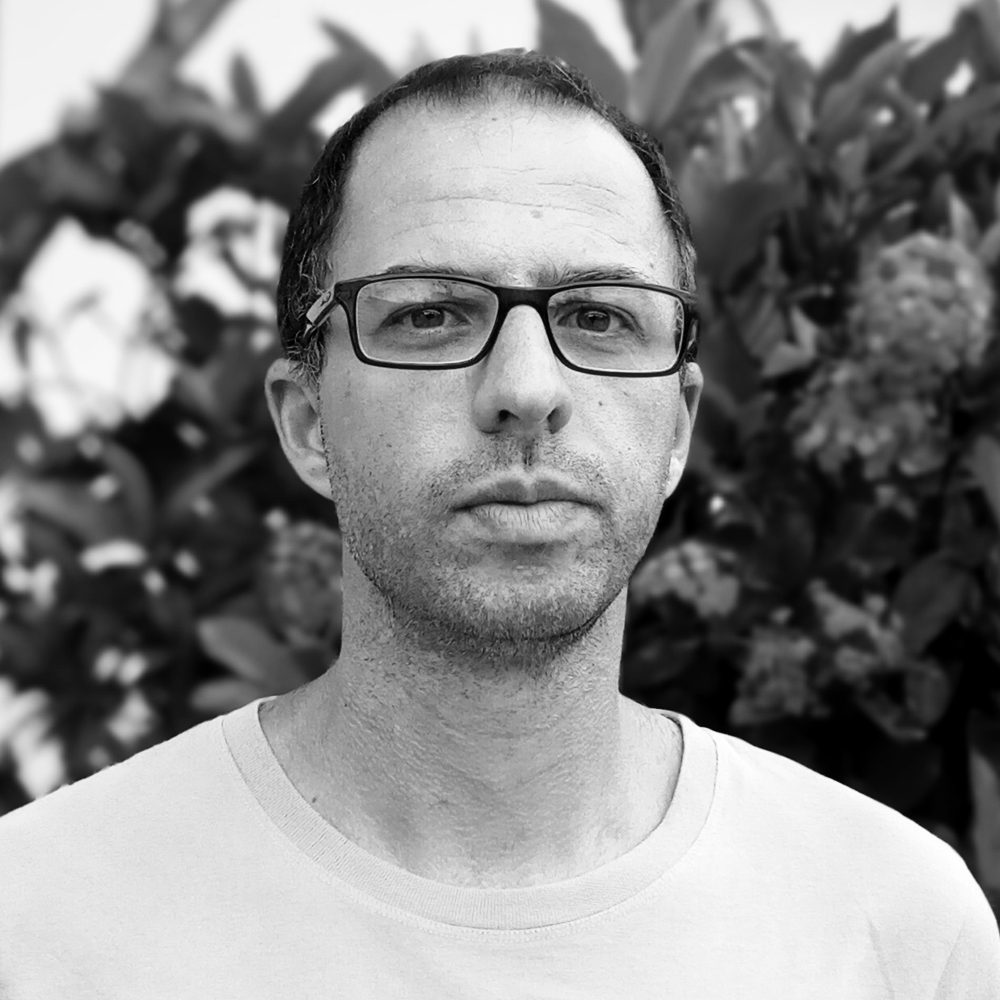A project in schools prescribes three servings of cheese, milk or yogurt per day, a recommendation that is not consensual within the scientific community
A Danone project has given controversial nutritional guidance to at least 300,000 students in Brazil’s public school system. Despite the promise to talk about healthy habits, the 1, 2, 3 Saúde Project (“1, 2, 3 Health!”) emphasized the consumption of lactic or dairy products, the flagship of the French Corporation, as it happens.
The program consisted of a play and educational material handed out to teachers and pupils, and was developed as a partnership with state- and municipal level Education Departments between 2013 and the first half of last year, when Danone decided to abort the program due to pressure.
–”Dairy product” comes from a very old word, lactis, which means “milk,” said the teacher during the play “The Fabulous World of Discoveries”.
– Got it. Dairy contains milk! – answered the main character, a pupil named Joãozinho (Johnny).
– That’s right! and, if you want to be nimble, strong, healthy and keep up your level of curiosity and imagination, you need three servings of dairy per day.
The project could be considered controversial if it only induced the consumption of dairy products. However, “ 1, 2, 3 Health! ” went one step further and categorically prescribed the need to consume three servings of these products per day, at the risk of suffering health problems in the short, mid and long term.
There is no scientific consensus to support this type of claim, despite dairy manufacturers’ constant effort to fund research which is favorable to their interests. If this were the case, there would be no vegan diets. And Asia, which concentrates 60% of the world population and as a rule has a very low intake of dairy products, would not be able to generate agile, strong and creative children like Johnny.
Such an initiative reached the point of being investigated by the Federal District State Prosecutor’s Office in 2016. Now, there is a chance the lawsuit will be filed.
“It was a project about an important objective for schools that was to help children make choices. The choices were given as possibilities of adult professions, “said Lilian Faversani, the educator who coordinated the preparation of the original educational material.
“In the second year of the project, Danone made changes to the illustrations. They came up with illustrations of Danone’s yogurts. Danone called us and asked us to perform activities that would involve the distribution of yogurt at school at some point. It was then that I decided to leave the project and even requested my name be removed from the material. I disagreed completely.”
When asked about such statements, Danone chose to send out a generic answer. “Danone Brasil would like to emphasize that its communication actions are fully compliant with current Brazilian legislation and reflect the company’s mission to bring health to a large number of people. Between the years 2015 and 2016 the “1,2,3 Health” program disseminated information and knowledge about the importance of a good diet for free to schools all over the country, and in a fun way. Danone reiterates its commitment towards contributing to help Brazilians to adopt healthier living and eating habits.”
Trust in schools
We talked to people who participated in the “1, 2, 3 Health! ” program and we have no reason to doubt they acted in good faith. The interviews themselves, however, showed how complex it is to find the fine line between advertising and educational actions when it comes to the school environment.
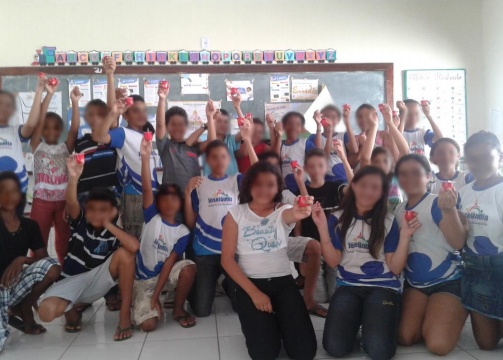
“It’s ranked as an educational project. So it is much more difficult to develop a critical sense about this action”, says Ekaterine Karageorgiadis. She is the coordinator of the Children and Consumption project at Alana Institute, which specializes in fighting advertising directed at infants. “Children rely on educators. They are in a place of care, of responsibility. So when commercial messages are heard within school premises, they are reinforced by those people who are there to look after the children.”
The corporation has donated – and received a tax refund for – a total of US$ 350,000.
Everything indicates that the project was very good for business. A 2015 video reported that 45% of participants said they had increased dairy product consumption – 46% declared they had increased vegetable consumption. “We were eager to work on eating habits from childhood because we know that is when your habits are formed,” said Maria Prado, Danone’s Category Development Manager.
The project focused on the harm that a low consumption of dairy products caused at each stage of one’s whole life. The core of the educational material consisted of the introduction of eight professions.
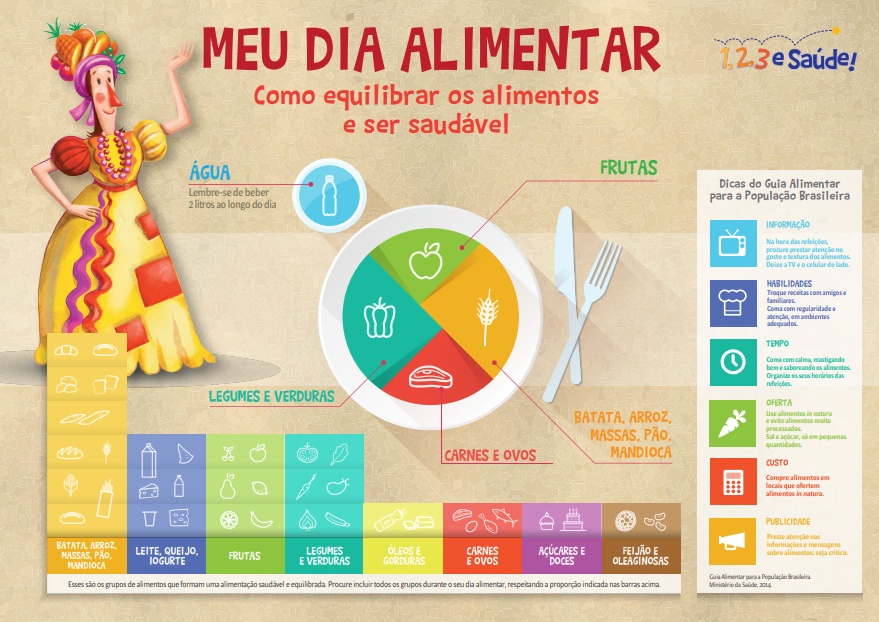
The pediatrician showed that calcium obtained from dairy products is a key element for healthy growth. The biologist talked about good and bad bacteria. The geriatrician warned that low intake of calcium throughout your life is associated with osteoporosis in the elderly. The teacher spoke about the etymology of words related to milk.
It’s when we get to the sociologist that things become more interesting. The children were supposed to pretend they were sociologists, which included interviewing their parents about the consumption of ….guess what? … dairy products. Those children did market research for Danone without being aware of or getting paid for it.
“1, 2, 3 Health!” also put up posters. One of them talked about general body care, which included bones: “Dairy products, such as cheese, milk and yogurt, contain nutrients that help the body make stronger and healthier bones.”
On the poster below, the situation begins to get more complicated from a scientific point of view. First, there is a reinterpretation of the Dietary Guidelines for the Brazilian Population, which recommends to make natural and minimally processed foods the basis of your diet. And, more important, to avoid the consumption of ultraprocessed foods.
Interestingly enough, dairy product entrepreneurs were the strongest voices when the Ministry of Health’s baseline document was drafted in 2014. Since then, there have been attempts to give it another meaning. The material of “1, 2, 3 Health! “ is an example: “Eat fresh foods and avoid foods that have been too much processed.”
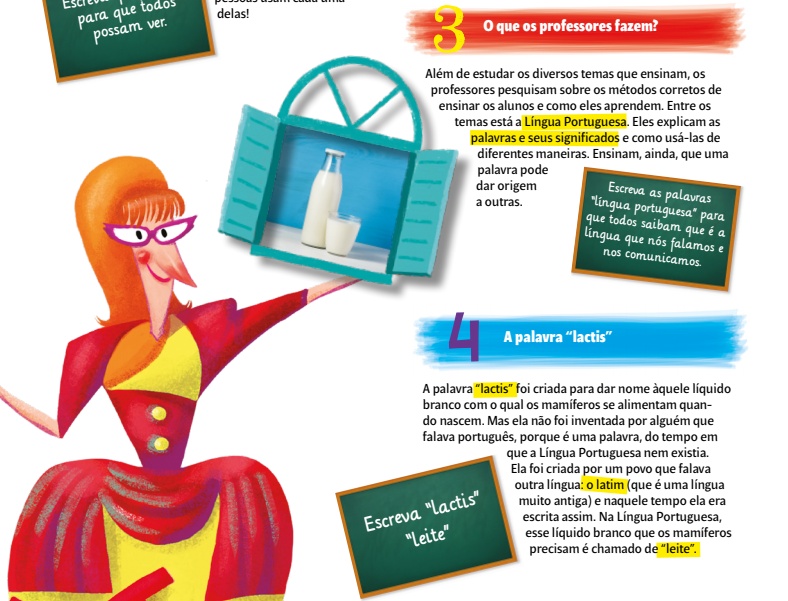
The most curious thing is that the poster proposes a portion per food group, which goes against the concept of the Guidelines. The Ministry of Health material offers a line of thought about eating habits and avoids issues such as considering nutrients and food groups. After all, if you follow the recommendation of making natural foods the basis of your diet, you do not have to worry about being a nutrition expert.
On the other hand, portioning is difficult to do on a daily basis. What is a portion of meat? Is a portion of fruit a slice of watermelon, an apple or a mango? What about bread, should I eat a whole roll, a slice or half of it?
Let’s follow the recommendation of “1, 2, 3 Health!” of ingesting daily six servings of “potatoes, rice, pasta, bread and manioc.” There are totally different qualities of products among them. I can understand that I am allowed to eat six servings of instant noodles and industrially processed bread. Or that I should just stick to manioc.
The material also speaks of three portions of cheese, milk or yogurt. And everything gets more controversial when students need to fill in the blanks on a board daily, faithfully following the recommendations of portioning.
“IF THERE ARE EMPTY SPACES ON THE BOARD AT THE END OF THE DAY…. It means that you failed to consume from some group of foods or nutrients. Do not worry if it happens! Just make sure it does not happen again on other days of the week. ”
Taken literally, this guideline induces children who consume more than three daily servings of fruits or vegetables to reduce their intake. Conversely, it encourages the consumption of products that are not essential and that can even do them harm.
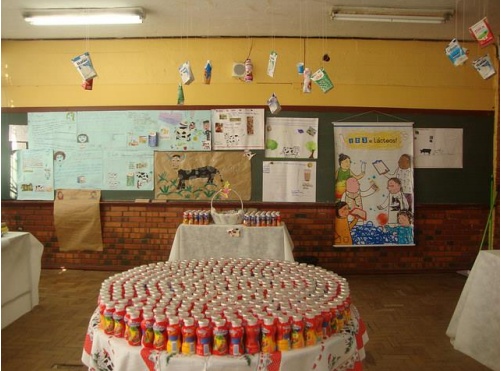
“Dairy products can provide nutrients that are important, but not that we have to consume certain portions per day to provide what we need to get adequate nutrition,” says Fabio Gomes, regional advisor of the Pan American Health Organization (Paho). He believes that the advertising efforts of the industry turned milk into a superfood and conveyed the idea that it is the only possible source of calcium.
“Does dairy products mean milk? Or is it a product that contains, besides milk, sugar, thickeners, dyes and other things mixed in? “He asks. “When we think that the dairy product industry is thinking along these lines, of using less and less real food and increasingly adding cosmetic foods to reduce production costs, this reinforces the need to think of dairy products as a food that has been tampered with, so much so that it has turned out to be a food source that distorts good eating habits and a healthy diet. ”
Danoninho, Danone’s flagship product, is high in sugar and saturated fats. Advertising investment has been so successful that it is, to this day, considered an essential item for healthy growth in many countries. In a study carried out in 2015, Argentinean mothers cite Danoninho as mandatory in their children’s diet and believe they are doing a good thing by buying it.
Danette, also very popular among small children, has excess sugar and saturated fats.
Limits
The Danone project is emblematic with regard to the limits of the presence of companies in the school environment. The corporation claims that it is an “unbranded” initiative, in other words, that there is no brand exposure.
“What strikes me most is the result,” says Ekaterine Karageorgiadis from Alana Institute. “I have analyzed over three thousand photos, drawings and essays. Of course there is a branding message. If not, children would not write an essay about the role played by Danone. The child would not draw a little red pot and write down that in order to be healthy you need to consume dairy products three times a day. They would not take a picture that says Danone, Danone, Danone. There would not be an award ceremony with the company’s products on a table. ”
We talked to municipal public authorities involved in the “1, 2, 3 Health! ” Project. The story is well known. First, education networks lack resources. Second, not enough projects. Nice looking educational material, combined with a well-made play talking about healthy habits is a chance to break the routine and talk about subjects that are often beyond teachers’ knowledge.
In addition to this scenario, awarding a prize to schools and children who develop the best projects. Not about healthy living, but about the importance of dairy products. There are quite a few videos on YouTube where you can check the results of this project.
Danone has a voluntary commitment regarding advertising aimed at children. The company says it does not distribute products at schools, “unless it is requested by the educational institution or for educational and sporting purposes.”
It is part of the proposal not to encourage “unhealthy habits” and not to undermine parents’ authority. The corporation also authorizes itself to advertise products to children between the ages of three to twelve, as long as they are considered healthy – this is the case of Danoninho, with 6.1 grams of sugar per 40 grams pot.

